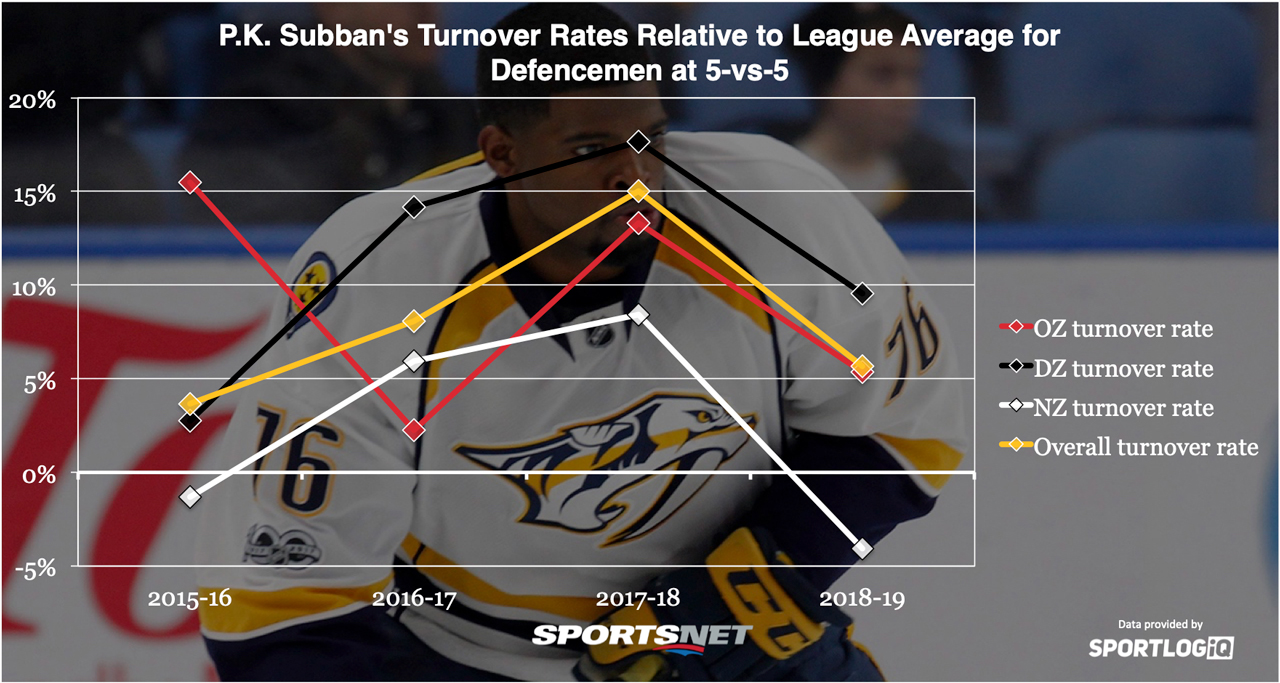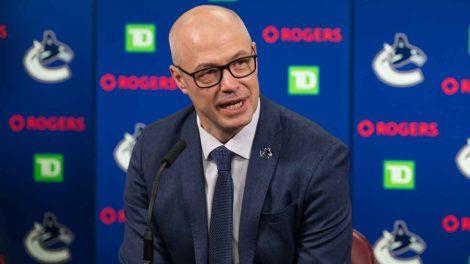In a move that has been heavily rumoured to happen all spring, the Nashville Predators traded P.K. Subban in order to clear up some cap space to both re-sign team captain Roman Josi, and add some scoring up front.
The emergence of Dante Fabbro at the end of last season allows the Predators to maintain a strong top four on defence. GM David Poile also drafted all three of Josi, Ryan Ellis, and Mattias Ekholm. The latter two are signed to team-friendly deals relative to their talent level and league-wide value, plus Josi is the captain, so Subban was the obvious odd-man out.
Not to mention that just like Shea Weber in 2016 when the Predators traded him for Subban in the first place, Subban is the oldest player in that group. When you’re the oldest and (currently) most expensive, it’s easy to build the logic that you’re the most expendable as well.
Toss into the mix that Subban had an underwhelming season in 2018-19, and it starts to make sense. However, all of that logic collapses pretty severely if you look at the return Nashville got on this one; a decent-to-good prospect in Jeremy Davies, a depth player in Steve Santini, and two second-round picks. That’s a tough sell to the Nashville fanbase for a player who is one year removed from a Norris Trophy nomination.
However, there are persistent whispers around the NHL about Subban’s troubles with his back over the last three seasons, he’s missed 35 games to injury over the last three seasons, and at 30 years old, his prime years are behind him. Last season’s lackluster performance might lead a lot of people to believe that the decline for Subban could be swift, which is something the Devils clearly have to be aware for such a large cap hit, but the risk is especially worth it when paying such a low price in a trade.
So the question going forward is what is Subban now? Is he still an elite talent? Going by the player ranking project I do for Sportsnet every summer, I have data on Subban going back to 2012-13, but the dataset gets far more robust in 2015-16 when Sportlogiq began to track every game.
I haven’t tracked last season yet, but going back to 2012-13, Subban has ranked first, fifth, first, third, third, and fifth in individual seasons in terms of overall positive impact on the teams he’s played on. There’s a slight decline in there overall, from his prime seasons in Montreal where he was competing with Erik Karlsson as the best in the league, to the Nashville years where he was solidly in the top five at his position but falling behind Karlsson and Doughty.
From those lofty heights, there’s a long way to fall before Subban wouldn’t be a high impact player anymore, but the impression in some circles seems to be that he was terrible last season, so let’s see if he really fell down the proverbial elevator shaft, starting with differentials.

Looking at on-ice differentials only, the decline over the last couple of years looks real and severe, but there are a few factors we need to consider here to put the numbers in context.
In 2017-18, Subban was nominated for the Norris despite pretty much uniformly worse-than-team-average differentials, so what exactly happened there?
The biggest factor was Subban spent much of the campaign carrying Alexei Emelin, while Ryan Ellis missed half the season in one of the harshest defensive usage pairings in the league, with terrible quality of teammates and high quality of competition, with deployment that heavily stacked those differentials against him.
A hilarious aside: the season before,Shea Weber also had Alexei Emelin tank a half season of his on-ice differentials before finally being paired with Andrei Markov and looking great.
When you isolate Subban’s minutes without Emelin on the ice, everything rockets to team-best numbers despite the usage staying the same, and despite that harsh usage and unfortunate partner, he led the league for primary points among defencemen.
That’s what likely drove voters to pick him among the top three, though I had him slightly lower at fifth.
Without the extreme usage and poor partner last season, Subban’s numbers trended upwards but not nearly as much as you would expect for a player of his calibre, and not wholly into the positives. That’s worrying, even if he was playing injured for much of the season, but on-ice statistics aren’t the be-all end-all, so let’s look at a few areas where Subban has typically been dominant relative to the rest of the league on an individual basis.

Starting with turnovers, what I’ve done here is a bit different than usual, as each data point represents how much better or worse Subban was at not turning the puck over compared to the league average for defencemen.
Performance varies by zone, with Subban having two seasons of four where he was a bit riskier in the neutral zone than the average defenceman, but overall with the puck on his stick, it was less likely to result in a turnover over the last four years than every single defenceman in the league, with only Drew Doughty coming anywhere close.
2017-18 especially, with more inherent risk involved with every turnover with a partner he couldn’t trust to back him up defensively, he was 15 per cent safer with the puck than a league average defenceman, an absurd level of clinical puck-handling for a defenceman who is counted on to produce offence.
Last season, though, there’s a decline in every single zone again. The overall picture remains excellent, being over five per cent safer with the puck than the average defenceman is among the league’s best margins, but there’s still a drop-off that we can’t ignore.

Looking at areas where Subban has individually stood out throughout his career, decline hasn’t exactly hit in a linear fashion. One thing that is very clear is that his even-strength offensive production is drying up a bit. He’s still over 10 per cent better at creating even-strength offence than the average defenceman, but he used to be absurdly excellent at it.
This could absolutely be a decline in his game, but there could be external factors as well. In Montreal, he was the guy the offence went through, whereas that was Roman Josi in Nashville, who was the one who was afforded the leash to make risky offensive plays on the regular.
In New Jersey, Subban will be the guy on defence, so I wonder if he begins to stand out in the way he used to offensively. If he doesn’t, I think it’s safe to say his offensive game at evens has declined significantly.
On the power play, he again seems to be around 10 per cent better than average, with a huge drop off from his first season in Nashville, but not too far removed from his last season in Montreal.
Subban is no scrub on the man advantage, and more than just creating offence directly, he still rates as one of the better power-play quarterbacks in the league when you factor in breakouts, entries, keeping the puck in the offensive zone, and dishing to the slot.
Defensively, Subban hasn’t seen any decline in his ability to recover, rebound and win defensive zone puck battles. He’s not quite at the elite level in those areas like Mark Giordano for example, but in areas without a lot of spread across the NHL, a 10 per cent increase in efficiency over the league average is pretty huge.
A lot more numbers need to be crunched before we can see how much some decline in Subban’s game will knock him down the overall rankings among defencemen, but at least for now and despite an injury that hobbled him last season, Subban remains a No. 1 defenceman on most teams at the very least.
Whether he continues to be that for the remaining three seasons on his current contract is anyone’s guess, but there isn’t enough of a fall off here that would indicate a massive risk for the Devils.
[relatedlinks]







